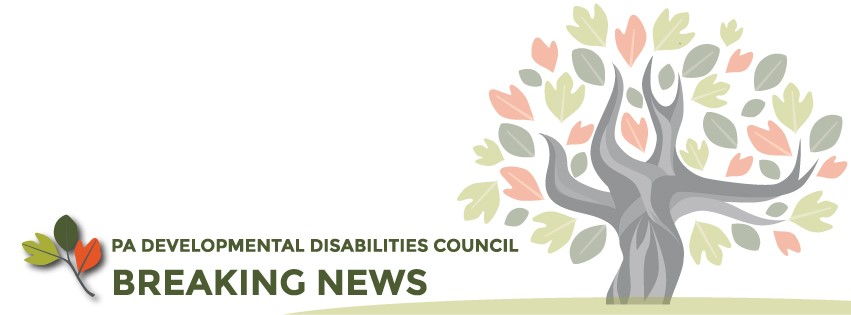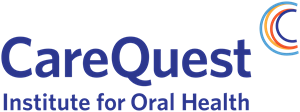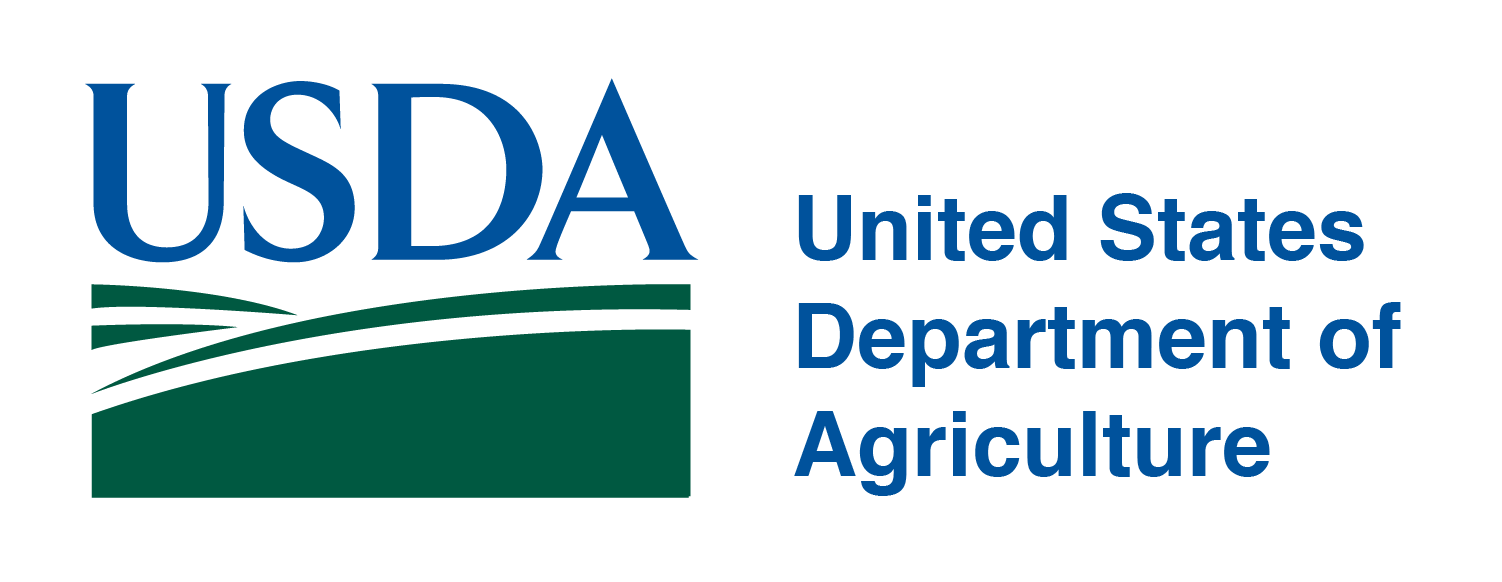- CMS: Medicare Program; Implementation of Prior Authorization for Select Services for the Wasteful and Inappropriate Services Reduction (WISeR) Model
- Public Inspection: CMS: Medicare Program: Implementation of Prior Authorization for Select Services for the Wasteful and Inappropriate Services Reduction Model
- CMS: Secretarial Comments on the CBE's (Battelle Memorial Institute) 2024 Activities: Report to Congress and the Secretary of the Department of Health and Human Services
- HHS: Patient Protection and Affordable Care Act: Marketplace Integrity and Affordability
- HRSA Announces Action to Lower Out-of-Pocket Costs for Life-Saving Medications at Health Centers Nationwide
- Public Inspection: HHS: Patient Protection and Affordable Care Act: Marketplace Integrity and Affordability
- Increased Risk of Cyber Threats Against Healthcare and Public Health Sector
- Eight Hospitals Selected for First Cohort of Rural Hospital Stabilization Program
- Announcing the 2030 Census Disclosure Avoidance Research Program
- CMS: Medicare Program; Hospital Inpatient Prospective Payment Systems for Acute Care Hospitals and the Long-Term Care Hospital Prospective Payment System and Policy Changes and Fiscal Year 2026 Rates; Requirements for Quality Programs; and Other Policy Changes; Correction
- CMS: Medicare Program; Hospital Inpatient Prospective Payment Systems for Acute Care Hospitals and the Long-Term Care Hospital Prospective Payment System and Policy Changes and Fiscal Year 2026 Rates; Requirements for Quality Programs; and Other Policy Changes; Correction
- CMS: Medicare and Medicaid Programs; Contract Year 2026 Policy and Technical Changes to the Medicare Advantage Program, Medicare Prescription Drug Benefit Program, Medicare Cost Plan Program, and Programs of All-Inclusive Care for the Elderly; Correction
- CMS: Medicare and Medicaid Programs; Contract Year 2026 Policy and Technical Changes to the Medicare Advantage Program, Medicare Prescription Drug Benefit Program, Medicare Cost Plan Program, and Programs of All-Inclusive Care for the Elderly; Correction
- CMS: Medicare Program; Prospective Payment System and Consolidated Billing for Skilled Nursing Facilities; Updates to the Quality Reporting Program for Federal Fiscal Year 2026
- CMS: Medicare Program; FY 2026 Hospice Wage Index and Payment Rate Update and Hospice Quality Reporting Program Requirements
Pennsylvania State Data Center Publishes Data Updates

2021 ACS 1-Year Estimates Released
The U.S. Census Bureau today released a new set of estimates from the American Community Survey (ACS) for the year 2021, providing new data for a variety of demographic and economic topics for the nation, states, and other areas with populations of 65,000 or more.
PA remote labor force grew to over 1 million workers!
Over 1 million Pennsylvanians worked primarily from home in 2021, representing nearly 1-in-5 Pennsylvania workers (18.7%). This estimate is up from approximately 333,600 (5.4%) in 2019, meaning that the number of Pennsylvania workers who worked primarily from home tripled from 2019 to 2021.
Click here to access these reports and more.
CMS OMH Honors National Hispanic Heritage Month

This year, as the Centers for Medicare & Medicaid Services Office of Minority Health (CMS OMH) honors National Hispanic Heritage Month, we will be focusing on the nation’s 60.5 million Hispanics by highlighting some common health disparities facing Hispanic populations and sharing resources to help further health equity.
Hispanic populations suffer from lower rates of health insurance coverage compared to their non-Hispanic counterparts, with nearly 30% of Hispanic adults aged 18 to 64 being uninsured. Like other minority groups, Hispanic populations are disproportionately affected by chronic health conditions, such as diabetes, cancer, and heart disease. Hispanic subpopulations also face their own distinct health disparities including higher rates of smoking among Puerto Rican and Cuban male populations, as well as higher rates of chronic liver disease and cirrhosis among Mexican populations. Additionally, among Hispanic pregnant individuals, the maternal mortality rate increased significantly from 2019 to 2020, largely due to COVID-19 related health disparities.
As Hispanic populations continue to face disparities related to COVID-19 and other health conditions, it is important to have all the information and resources needed to ensure Hispanic patients receive culturally and linguistically competent care from their health care provider and are able to take steps towards better health. Below, please find materials in Spanish, data, resources on language access, culturally and linguistically appropriate services (CLAS), and more. Throughout this month and beyond, we encourage you to review and share these resources to continue to advance health equity for Hispanic populations.
Resources
- Visit the Coverage to Care (C2C) website in Spanish to find consumer-facing resources that are available in Spanish. Be sure to download our newly updated C2C Roadmap to Behavioral Health (Spanish), which serves as a companion guide for mental health and substance use service with the Roadmap to Better Care (Spanish). The newly updated Managing Diabetes: Medicare Coverage and Resources is also available in Spanish and is aimed at helping patients with managing their diabetes and health coverage.
- Read our Disparities in Health Care in Medicare Advantage by Race, Ethnicity, and Sex: April 2022 stratified report, which looks at racial, ethnic, and gender differences in health care experiences and quality of care for people with Medicare Advantage.
- Use the Mapping Medicare Disparities Tool identify areas of disparity between subgroups of people with Medicare (e.g., racial and ethnic groups) in health outcomes, utilization, and spending. This tool is also available in Spanish.
- Review our Understanding the Health Needs of Diverse Groups of Hispanic Medicare Beneficiaries data highlight, which examines the medical needs and challenges of a fast growing Hispanic population.
- Download A Practical Guide to Implementing the National CLAS Standards, which serves to enable health care organizations to implement the National CLAS Standards, improve health equity, and provide practical tools and examples of CLAS.
- Download CMS’s Guide To Developing A Language Access Plan, which is a resource to help organizations develop a plan to provide services to individuals who are non-English speaking or have limited English proficiency.
- Download HHS’s Improving Cultural Competency for Behavioral Health Professionals e-learning program for behavioral health professionals to increase their cultural and linguistic competency.
- To find federal vaccine resources, visit our Immunization and Vaccine Resources webpage and CDC’s COVID-19 Vaccine Webpage in Spanish.
The U.S. Department of Homeland Security issued a final rule applicable to noncitizens who receive or wish to apply for benefits provided by the HHS and States that support low-income families and adults. This rule will help ensure that noncitizens can access health-related benefits and other supplemental government services to which they are entitled by law, without triggering harmful immigration consequences. The final rule will be effective on December 23, 2022.
USDA Rural Development Announces ReConnect Program Workshop for FY2022
ReConnect Round 4 Application Workshop
Presented by USDA Rural Development’s Rural Utilities Service (RUS), this 3-day workshop will provide an end-to-end walkthrough of the ReConnect application system.
This workshop will include:
- An in-depth exploration of each section of the online application system
- Step-by-step demonstrations and how-to’s showing how to enter and save data in each section of the application
- Plenty of time for questions and answers at the end of each session
We will present this workshop once. We’ll address questions as time permits during each session and include an updated list of the most common questions on our Frequently Asked Questions page on the ReConnect website.
Slides, a transcript, and a recording of the workshop will be posted at the ReConnect website after the session.
Please note: attendees only need to register once to attend any or all workshop sessions. View the full workshop agenda on the ReConnect website’s events page.
Workshop Dates and Times
- Tuesday, September 13, 2022 from 12:00PM to 5:00PM Eastern
- Wednesday, September 14, 2022 from 10:00AM to 5:15PM Eastern
- Thursday, September 15, 2022 from 10:00AM to 4:15PM Eastern
Contact
Please submit any ReConnect questions using the Contact Us Form on the ReConnect website.
Pennsylvania Disabilities Council Releases Fall 2022Request for Applications.

The Pennsylvania Developmental Disabilities Council (PADDC) is pleased to announce that the newest Request for Application (RFA) book for 2022-2026 State Plan is now available for you to download, which includes 15 separate grant opportunities. The deadline to submit applications for these grants is Wednesday, October 26, 2022. Click here to read more and download the RFA book and other application resources.
In addition, PADDC is offering funding on a rolling basis through our Community Grants Program. Get more information about the Community Grants Program.
Pennsylvania Assessing Current PPE Stockpile for Future COVID-19 and PHE Purposes
The Department of Health (DOH), Department of General Services (DGS), and Pennsylvania Emergency Management Agency (PEMA) are collaborating to right-size the current PPE stockpile for future COVID-19 and public health emergency purposes, and to ensure partners have sufficient quantities of PPE to protect against a likely fall/winter resurgence of COVID-19.
To that end, partners are encouraged to request PPE through this form. These resources are intended to support organizations for current or future COVID-19 protection, or other associated purposes (including training purposes) and are available at no cost to the recipient. These resources are NOT permitted to be used to offset normal operational costs for the procurement of PPE.
Please note that while you will be able to indicate requested quantities and size preferences, we will not be able to accommodate requests for specific brands/styles of products in the following categories:
- N95 masks
- Surgical masks
- Isolation gowns
- Face shields
- Nitrile gloves
- Hand sanitizer
- Sanitizing wipes
Depending on how quickly you intend to use these resources, you may request to be sent “long dated” materials (expiration dates >6 months), “short dated” materials (expiration >1 month but <6 months), or recently expired materials if they are to be used for non-healthcare and/or training purposes that do not involve human contact. Organizations receiving recently expired materials must complete the attached waiver and submit to HOC_log@pa.gov prior to receipt of PPE. We encourage facilities to request the shortest timeline product that can be used by your site.
This survey will be kept open and orders will be filled on a first-come, first-served basis through at least October 2022. Please email HOC_Log@pa.gov if you have any questions about this program. Thank you.
Biden-Harris Administration Now Accepting Applications for $1 Billion Rural High-Speed Internet Program
$1 Billion Increase in USDA ReConnect Program Round 4 Funding through the Historic Bipartisan Infrastructure Law
U.S. Department of Agriculture (USDA) Secretary Tom Vilsack today announced that USDA is now accepting applications for ReConnect Program loans and grants to expand access to high-speed internet for millions of people in rural America nationwide. The Department is making more than $1 billion available, thanks to President Biden’s Bipartisan Infrastructure Law. The program is a critical piece of the Biden-Harris Administration’s commitment to connect every American to affordable, reliable, high-speed internet.
“Ensuring that the people of rural America are connected with reliable, high-speed internet brings new and innovative ideas to the rest of our country, and it remains a core priority for President Biden,” Vilsack said. “That’s why high-speed internet is an important part of USDA Rural Development’s work with rural communities. Reliable high-speed internet opens the world’s marketplace to rural business owners. It enables them to expand their businesses and give more jobs and opportunities to people in their own community.”
On Sept. 6, USDA began accepting applications for loans, with available funds of $150 million, grants with available funds of $700 million, and combination loan/grant awards using $300 million under the ReConnect Program. These funds were appropriated under the Bipartisan Infrastructure Law, also known as the Infrastructure Investment and Jobs Act. Governmentwide, the law provides an historic $65 billion investment to expand affordable, high-speed internet to all communities across the U.S.
The application deadline is Nov. 2. For additional information, see page 47690 of the Aug. 4 Federal Register.
USDA has made several improvements to the ReConnect Program for the current round of applications. Collectively, these improvements increase the availability of funding in rural areas where residents and businesses lack access to affordable, high-speed internet. They include:
- Allowing applicants to serve areas where at least 50% of households lack sufficient access to high-speed internet.
- Adding a funding category for projects where 90% of households lack sufficient access to high-speed internet. For applications submitted under this category, no matching funds will be required.
- Waiving the matching funds requirement for: (a) Alaska Native Corporations, (b) Tribal Governments, (c) projects proposing to provide service in colonias, (d) projects proposing to serve persistent poverty counties and (e) projects proposing to provide service in socially vulnerable communities.
Additionally, to ensure that rural households in need of internet service can afford it, all awardees under this funding round will be required to apply to participate in the Bipartisan Infrastructure Law’s Affordable Connectivity Program (ACP). The ACP offers a discount of up to $30 per month towards internet service to qualifying low-income households and up to $75 per month for households on qualifying Tribal Lands. As a result, ACP-eligible households can receive internet at no cost and can sign up and check their eligibility at GetInternet.gov. The Department’s actions to expand high-speed internet access in rural areas are key components of the Biden-Harris Administration’s efforts to help America build back better in its recovery from the COVID-19 pandemic.
In the first round of the ReConnect Program, USDA invested $656 million to create or improve high-speed internet access for rural customers across 33 states and territories. In the second round of the ReConnect Program, USDA invested $850 million to create or improve high-speed internet access for rural customers across 37 states and territories. To date, USDA has announced $356 million in critical investments through the third round of ReConnect funding, for a total of $1.8 billion invested through the ReConnect Program since the program’s inception. More investments will be announced in the coming weeks.
Background: ReConnect Program
To be eligible for ReConnect Program funding, an applicant must serve an area where high-speed internet service is not available at speeds of 100 megabits per second (Mbps) (download) and 20 Mbps (upload). The applicant must also commit to building facilities capable of providing high-speed internet service at speeds of 100 Mbps (download and upload) to every location in its proposed service area.
To learn more about investment resources for rural areas, visit www.rd.usda.gov or contact the nearest USDA Rural Development state office.
Under the Biden-Harris Administration, Rural Development provides loans and grants to help expand economic opportunities, create jobs and improve the quality of life for millions of Americans in rural areas. This assistance supports infrastructure improvements; business development; housing; community facilities such as schools, public safety and health care; and high-speed internet access in rural, tribal and high-poverty areas. For more information, visit www.rd.usda.gov.
If you’d like to subscribe to USDA Rural Development updates, visit our GovDelivery subscriber page.
Community Water Fluoridation: First Ever Randomized Controlled Trial
The first ever randomized controlled trial (RCT) on suboptimal and optimally fluoridated water is underway. Dr. Gary Slade from the University of North Carolina is conducting the trial based on two North Carolina communities.
New Report: Higher Oral Cancer Prevalence Among Medicaid Enrollees
 A new journal article, co-authored by the CareQuest Institute for Oral Health, concludes that Medicaid enrollees experience higher oral cancer and throat cancer incidence, prevalence, and mortality compared with commercially insured adults. The article is based on a study that compared all cases and new cases of oral and throat cancers among approximately 38,000 Medicaid enrollees and approximately 27,000 individuals with commercial medical insurance. Researchers found that total cancer treatment costs were higher for those with commercial insurance and that cases of oral and throat cancers were lower among adults who had seen a dentist within the prior year.
A new journal article, co-authored by the CareQuest Institute for Oral Health, concludes that Medicaid enrollees experience higher oral cancer and throat cancer incidence, prevalence, and mortality compared with commercially insured adults. The article is based on a study that compared all cases and new cases of oral and throat cancers among approximately 38,000 Medicaid enrollees and approximately 27,000 individuals with commercial medical insurance. Researchers found that total cancer treatment costs were higher for those with commercial insurance and that cases of oral and throat cancers were lower among adults who had seen a dentist within the prior year.
Promoting Dental Infection Control Awareness Month
September is Dental Infection Control Awareness Month and the theme for 2022 is “Staying in the Know Together.” This annual observance is celebrated by the Organization for Safety, Asepsis, and Prevention (OSAP) to help clinicians and infection control coordinators promote a safe, professional environment and encourage patient dialogue. Providers have the opportunity to demonstrate commitment to infection prevention and patient safety. A social media toolkit is available on the OSAP website.
Click here to learn more.
Click here to download the toolkit.
Public Comment Period Announced to Promote Efficiency, Reduce Burden, and Advance Equity within CMS Programs

The Centers for Medicare & Medicaid Services (CMS) released a Request For Information (RFI) seeking public input on accessing healthcare and related challenges, understanding provider experiences, advancing health equity, and assessing the impact of waivers and flexibilities provided in response to the COVID-19 Public Health Emergency.
The Make Your Voice Heard: Promoting Efficiency and Equity Within CMS Programs RFI furthers CMS’ commitment to engaging and learning from partners, communities, and individuals across the health system to inform how we can better support the populations we serve. In alignment with Executive Order 13985, Advancing Racial Equity and Support for Underserved Communities Through the Federal Government, the CMS Strategic Plan Pillar: Health Equity and the CMS Framework for Health Equity (2022-2032), this RFI aims to gather feedback and perspectives related to challenges and opportunities for the Agency to embed health equity into our efforts encouraging innovation, reducing burden, and creating efficiencies across the healthcare system.
“Advancing health equity is core work of the Centers for Medicare & Medicaid Services. That’s why I am inviting stakeholders to help achieve our goal of an equitable and efficient health system, by working with us as we transform the healthcare experience for the individuals we serve,” said CMS Administrator Chiquita Brooks-LaSure. “Health equity is embedded within the DNA of CMS and serves as the lens through which we view all of our work.”
Disparities in health and healthcare continue despite decades of research and widespread efforts to improve health outcomes in the United States. Many populations, including racial and ethnic minorities, members of federally-recognized Indian Tribes, people with disabilities, patients seeking substance use and mental health services, individuals dually eligible for Medicare and Medicaid, and those living in rural and underserved areas are more likely to experience challenges accessing healthcare services, lower quality of care, and below average health outcomes when compared to the general population.
CMS is seeking to better understand individual and community-level burdens, health-related social needs, and opportunities for improvement that can reduce disparities and promote efficiency and innovation across our programs. CMS is requesting information related to strategies that successfully address drivers of health inequities, including opportunities to address social determinants of health and challenges underserved communities face in accessing comprehensive, quality care. For example, challenges accessing care may include understanding coverage options, receiving culturally and linguistically appropriate care, accessing oral health services, and accessing comprehensive and timely healthcare services and medication.
Through this RFI, CMS also seeks to better understand the factors impacting provider wellness and learn more about the distribution of the healthcare workforce. We are particularly interested in understanding the greatest challenges for healthcare workers in meeting the needs of individuals, and the impact of CMS policies, documentation and reporting requirements, operations, and communications on provider experiences.
Comments received in response to the Make Your Voice Heard RFI will be used to identify opportunities for improvement and to increase efficiencies across CMS programs. In addition, CMS hopes to learn how specific programs have benefited providers, practices, and the people we serve. We work to continually improve our programs and build solutions that will help close gaps in healthcare quality, access, and outcomes to ensure that all those served by CMS programs have a fair and just opportunity to attain their optimal level of health.
CMS encourages comments from all interested stakeholders, in particular, patients and their families, providers, clinicians, consumer advocates, and healthcare professional associations. We also encourage comments from individuals serving and located in underserved communities, and from all CMS stakeholders serving populations facing disparities in health and healthcare. The RFI is open for a 60-day public comment period beginning September 6, 2022. Comments must be received by November 4, 2022 to be considered.
The web-based public comment form was specifically designed to provide easy access and an improved user experience for submitting information. For more information on the Make Your Voice Heard: Promoting Efficiency and Equity Within CMS Programs RFI and to access the web-based public comment form, please visit: https://www.cms.gov/request-information-make-your-voice-heard


